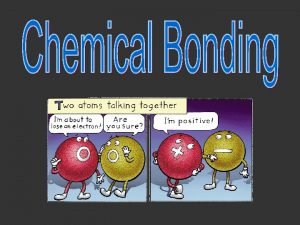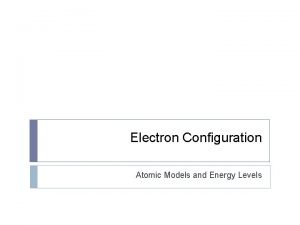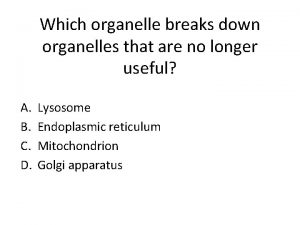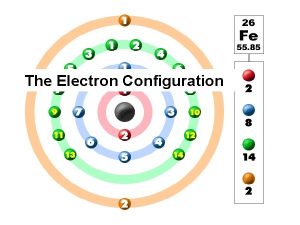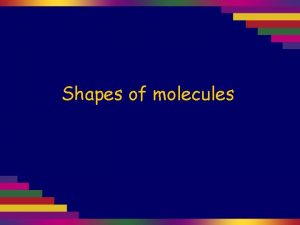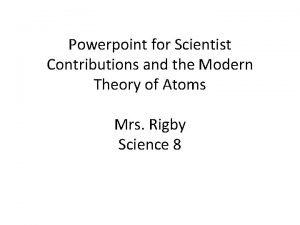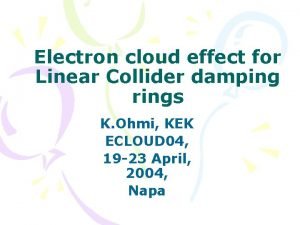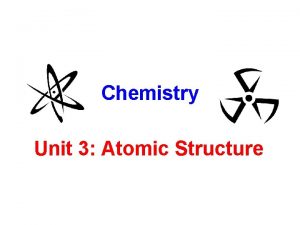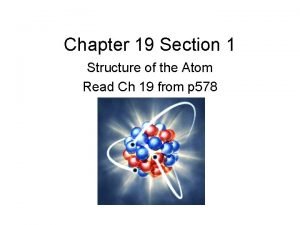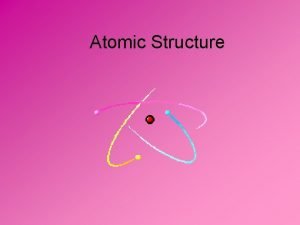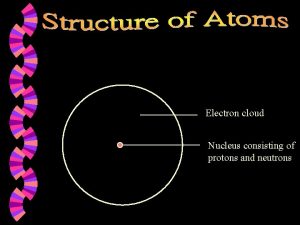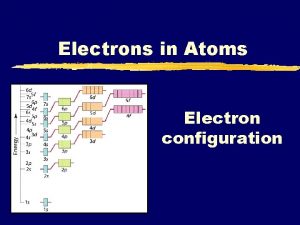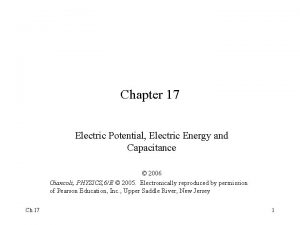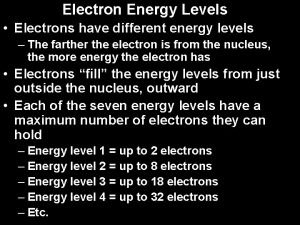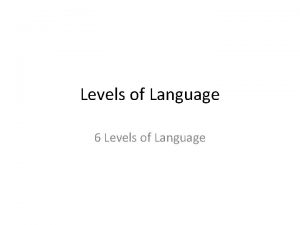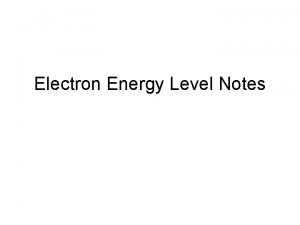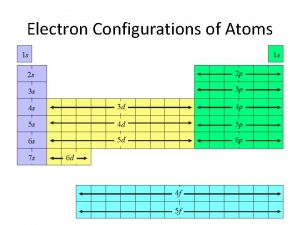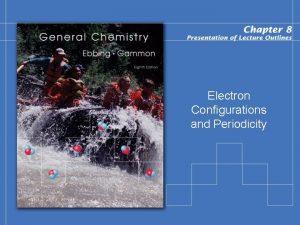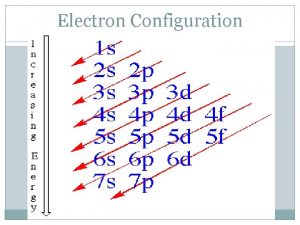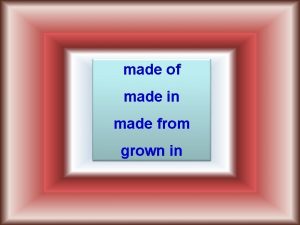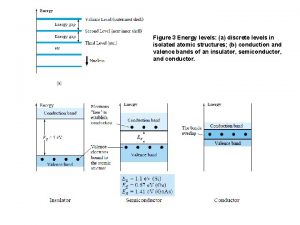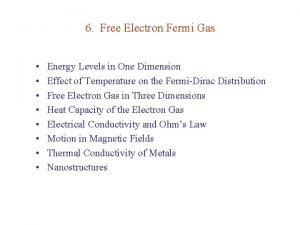Energy Levels The electron cloud is made up
























- Slides: 24


Energy Levels • The electron cloud is made up of different energy levels. • Each energy level can hold only a certain number of electrons: – 1 st energy level can hold only 2 electrons – 2 nd energy level can hold 8 electrons – 3 rd energy level can hold up to 18 electrons

Valence Electrons • The electrons in the outermost energy level of an atom are called valence electrons. • The number of valence electrons in an atom determines whether or not the atom will form chemical bonds with other atoms.

Stable Atoms • Atoms of most elements are more stable when they have eight valence electrons. • Atoms usually react in a way that makes each atom more stable: – either the number of valence electrons increases to 8 (or 2 in the case of hydrogen) – or, the atom gives up loosely held valence electrons

Chemical Bonds • Chemical bonds form when the electrons of one atom interact with the electrons in another atom. • When atoms bond, electrons may be transferred from one atom to another, or they may be shared between atoms.

Electron Dot Diagrams • One way to depict the number of valence electrons is through an electron dot diagram. – Diagram includes the symbol for the element – Each dot stands for one valence electron


Bonding & the Periodic Table • Periods: – from left to right the atomic number increases – as the atomic number increases, the number of electrons also increases • Groups: – from top to bottom, elements in a group always have the same number of valence electrons – the elements within a group have similar properties because they all have the same number of valence electrons

Valence Electrons & the Periodic Table

Group 1 elements (Alkali Metals) have 1 valence electron and can become chemically more stable if they lose one valence electron. Because of this, they are very reactive.

Group 2 elements (Alkaline Earth Metals) lose 2 electrons easily and are almost as reactive as Group 1.

Group 3 to 12 elements (Transition Metals) – In general, the reactivity of metals decreases from left to right across the Periodic Table.

Metalloids can either lose or share electrons – can behave as a metal or nonmetal depending on the conditions.

Nonmetals become more stable when they gain or share electrons – all nonmetals have 4 or more valence electrons. They combine with metals by gaining electrons. They combine with other nonmetals by sharing electrons.

Group 17 elements (Halogens) have 7 valence electrons – a gain of just one makes them stable – because of this, they react easily with other elements that can give or share one electron.

Group 18 elements (Noble Gases) have 8 valence electrons, except for He which has 2, are stable, and not reactive.


Ionic Bonds • An ionic bond is the attraction between two oppositely charged ions. • Involves the transferring of electrons • Ionic bonds form as a result of the attraction between positive and negative ions. • Ionic bonds usually form when a metal combines with a nonmetal


Covalent Bonds • The chemical bond formed when two atoms share electrons is called a covalent bond. • The force that holds atoms together in a covalent bond is the attraction of each atom’s nucleus for the shared pair of electrons. – Covalent bonds form between atoms of nonmetals


Atoms of some elements pull more strongly on shared electrons than do atoms of other elements. As a result, the electrons are pulled more toward one atom, causing the bonded atoms to have slight electrical charges.

Covalent Bonds • A covalent bond in which electrons are shared equally is called a nonpolar bond. • A covalent bond in which electrons are shared unequally is called a polar bond.

Water Chemistry The negatively charged oxygen ends of the polar water molecules attract the positively charged hydrogen ends of nearby water molecules.
 Electron cloud levels
Electron cloud levels Energy levels periodic table
Energy levels periodic table Colors seen in images made from electron microscopes are
Colors seen in images made from electron microscopes are Aufbau principle is not satisfied by
Aufbau principle is not satisfied by Electron cloud shape
Electron cloud shape Electron cloud
Electron cloud Electron cloud model
Electron cloud model Electron cloud rings
Electron cloud rings Zumdahl chemistry
Zumdahl chemistry Electron cloud model
Electron cloud model Mass and matter
Mass and matter Electron cloud diagram
Electron cloud diagram Calcium electron cloud
Calcium electron cloud Costa's level of thinking house
Costa's level of thinking house Energy energy transfer and general energy analysis
Energy energy transfer and general energy analysis Energy energy transfer and general energy analysis
Energy energy transfer and general energy analysis Permissive federation in cloud computing
Permissive federation in cloud computing Levels of virtualization in cloud computing
Levels of virtualization in cloud computing Cloud computing mechanism
Cloud computing mechanism Computing refers to
Computing refers to Cloud to cloud integration patterns
Cloud to cloud integration patterns Public cloud vs private cloud cost analysis
Public cloud vs private cloud cost analysis Lepsnap
Lepsnap What is energy level in electron configuration
What is energy level in electron configuration Kinetic energy in electron volts
Kinetic energy in electron volts
